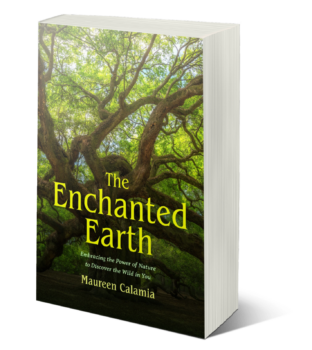 What is biophilic design and feng shui?
What is biophilic design and feng shui?
Feng shui is an intuitive art developed thousands of years ago from the observation of nature, common sense and gut instincts. It was designed primarily to locate the best land for building, and we believe it was first used to site ancestral burial grounds.
Feng shui is a language of symbols and metaphor that requires attention to the feel of spaces to help us cope with a life in wild nature. On the other hand, biophilic design is a language of statistics and research which helps us create spaces to cope with a life devoid of nature. Research fuels its growth. One requires intuition, the other, science.
One requires intuition, the other, science.
Our ancestors recognized our inherent love of living things. They observed the ways of nature and understood that those “ways” also impacted our lives. Many indigenous cultures had a system of locating and building the best living spaces; spaces that would allow them to not only survive but thrive. In China, they assembled principles of what we now know as feng shui.
Ancient people recognized that connection to the land was vital for physical life but also served a role in their spiritual life. They were highly sensitive to their environment and perceived immediate shifts in the spiritual quality of the land, before it would manifest in the physical realm. They had a deep sense of not only stewardship, but equality and interrelationship with the land.
Feng Shui is the Heart and Soul of Biophilic Design
Through the past decade of my studies, I now understand this: feng shui is the heart and soul of biophilic design. Feng shui is the yin to biophilic design’s yang. And if I’ve learned anything about feng shui, it is that there is a yin and yang to everything in the universe.
 I believe that these two disciplines overlap significantly when we compare the core of feng shui (stripped of folklore, astrology, superstition, and more modern influences) to biophilic design. When we consider the symbolic concepts of chi, yin and yang, the five elements, orientation, and landform, these ideas are all present in biophilic design, although using a different language. It is how we relate, connect, and restore with nature that is at the heart of these two disciplines.
I believe that these two disciplines overlap significantly when we compare the core of feng shui (stripped of folklore, astrology, superstition, and more modern influences) to biophilic design. When we consider the symbolic concepts of chi, yin and yang, the five elements, orientation, and landform, these ideas are all present in biophilic design, although using a different language. It is how we relate, connect, and restore with nature that is at the heart of these two disciplines.
In the rest of this post, I share some insights into how these disciplines overlap in perspective.
Location/Vitality of the Land
In both disciplines the land itself is of #1 importance. In feng shui, the best site has good landform for protection from the winds and an abundance of fresh flowing water. There is diverse vegetation and wildlife. In short, the ecosystem is healthy and alive. It has vitality. It also can sustain development and habitation. On the spiritual side, this healthy ecosystem translates to a sense of place and belonging to the earth.
Variety/Yin-Yang and Five Elements
Variety plays a huge role in both disciplines. Diversity in our spaces mimics the natural world. The principle of yin and yang helps us understand that everything is in relationship with everything else. Yin and yang are complementary opposites, such as soft and hard, sunlight and shade, textured and smooth, dark and light, a panorama of color and shape, to name a few. It is what we witness when we look at a natural scene.
Part of yin and yang theory includes the five elements of wood, fire, earth, metal and water that, according to Eastern philosophy, makes up everything in the universe. When we incorporate these elements, they give us the diversity of nature and bring nature into our spaces. The elements are not only the natural materials, but the energy, images, and deeper representations including color, shape, and esoteric symbols. For instance, water represents stillness and contemplation, and therefore, creates quiet, meditative spaces.
Movement & Chi Flow
In our built environment, a prime consideration is the flow of people through the space. Pathways should be constructed for comfort and ease. In feng shui this is the flow of chi. Paths that are narrow, long and straight will funnel people in quick and awkward movement. Paths that provide more space will allow people to slow down and pass each other with greater comfort.
Placement/Orientation & Command Position
Orientation and placement are key to a feeling of spaciousness. Windows that allow for natural light to penetrate the building, as well as provide views of nature are important to health and well being. Prospect and refuge is known as command position in feng shui. Both provide protection from behind as well as a clear view in front. These spaces allow people to feel more relaxed and function better.
But there are differences between feng shui and biophilic design as well.
 There are some differences as well. What might be considered good biophilic design may not be good feng shui, and vice versa.
There are some differences as well. What might be considered good biophilic design may not be good feng shui, and vice versa.
For instance, in biophilic design, land with a deep ravine at the back might be appreciated because of the nature views and possible wildlife living there. But from a feng shui perspective, this drop-off in the back area, representing the store of resources and money, would be a metaphor for lack of energy and support in these areas.
From a chi flow perspective, biophilic design does not address feng shui concepts such as rushing chi or blocked chi.
And perhaps some good feng shui spaces, might not be good from a biophilic design perspective. I have still more to learn!
But one thing is certain to me: These two disciplines become a more complete design solution for human and earth well being in today’s world.

